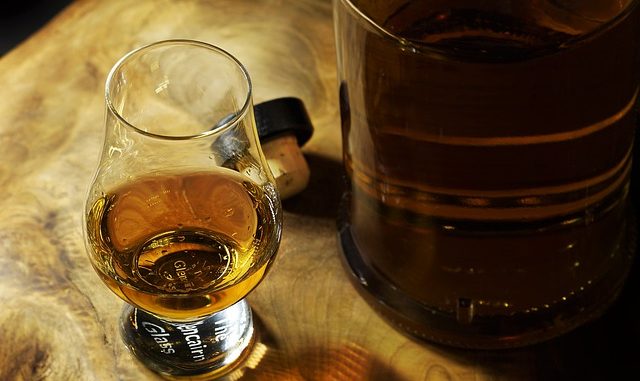
Rum is an alcoholic beverage distilled directly from fermented sugar cane syrups, molasses and other byproducts. It is one of those spirits that evokes those white washed sandy beaches of the Carribean islands like Jamaica and the West Indies, the ration of the Royal Navy, US liquor and literally the burning sun. To be fair it had as much to do with Britain losing its American Colonies as it did to keeping the Navy going.
Rum is produced in a number of countries but it will always be associated with the West Indies and certain parts of Latin America. It was originally developed as a drink for keeping the slaves going on the sugar plantations, as a form of currency and even encouraging slavery because of its mercantile value. There is some argument as to what rum really is because in Brazil and the French speaking parts of the Carribean, a spirit distilled similarly from just sugar cane and no molasses is produced and known as cacheça.
Rums come in a variety of grades. The lightest are mainly cocktail drinks whilst the dark rums are drunk straight, usually on the rocks. Rum and Coke is a common call to the bartender. Rum and Raisin is a common flavour call to the ice-cream seller.
Rum is traditionally stored in oak barrels. It is said that Nelson, having been killed at the Battle Of Trafalgar has his body preserved in a casket of rum. When the barrel was opened, only the preserved body remained. The sailors had bored a hole in the bottom and tapped off the rum with a straw, hence the term ‘tapping the admiral’. It was once a condition of service in the navy that a sailor was given a tot of rum as part of their rum ration.
Products
**Age Verification Required on Delivery: This product is not for sale to people under the age of 18. Proof of age and a signature will be required on delivery.**
There are a number of famous names ranging from Baccardi which is generally a white rum, Captain Morgan (Diageo) is much darker but just as well known.
Kraken Black Rum is a spiced dark rum evoking the demonic like squid which lurked in the oceanic depths and sent many a wrecked galleon to its watery grave. The base rum is derived from molasses and produced on the islands of Trinidad and Tobago. The flavour is described as “nutty, vanilla and coffee aromas are deliciously supported by the spicy palate and a long, peppery finish”. Spices are added to finish off the concept – cinnamon, ginger with clove. The rum itself is aged between 12 and 24 months. Purchase from Amazon now.
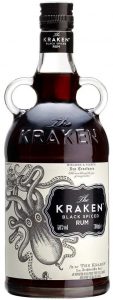
Diplomatico Reserva Exclusiva is a type of blended rum based on column distilled light and dark rums of ages up to 8 years. The flavour profile is described as “chocolate velvetiness on the tongue with creamy oak spice and citrus notes balancing the syrupy sweetness”. Purchase from Amazon now.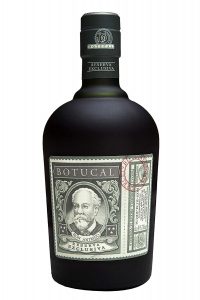
If you like spiced rums then Dead Man’s Fingers Spiced Rum might be the answer when served neat over ice or added to your best mixer. It was the BBC Good Food’s Top 10 Spiced Rums for 2019. Purchase from Amazon now.
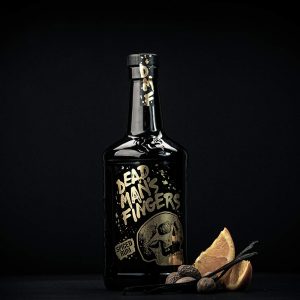
I enjoy Sadler’s Peaky Blinder Black Spiced Rum which has a sweet chocolate finish on a dark sugared base. This is a Black Country based producer who have been in operation since right at the beginning of the 20th Century. This product too was in the BBC Good Food’s Top 10 Spiced Rums for 2019. It is prepared with Orange, Nutmeg, Vanilla and Raisin. Purchase from Amazon now.

Remember you need to be over 18 to purchase these types of products !
Have you tried Bumbu Rum? This is an exquisite all-natural craft rum made with native Caribbean ingredients and aged for up to 15 years to create an effortlessly smooth and balanced rum with complexity and depth. The heritage of the product dates back to the 16th and 17th centuries, when sailors and merchants of the West Indies added Caribbean fruits and spices to their rum to enhance its flavour, calling it “Bumbu”. It is produced in Barbados. 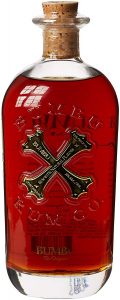
One of the classic rums is Woods Old Navy Rum which is produced from demerara sugar at 57% ABV. This one is smooth enough to drink neat but a great one for all sorts of cocktails. Purchase from Amazon now.

Spytail Ginger Rum
A rum which is both rich in flavour and dark chestnut in colour. The bottle almost gives the sense of a cognac rather than a rum. It has flavours of very pure fresh cut ginger with cinnamon spices that poke through. The rum actually comes from Cognac in France so you can see the nod to that region.
The makers believe that this is ideal neat but can be served with ginger beer, coke or as part of a cocktail. Ideal for Christmas.
Buy Now
Please note this page contains links to our affiliate marketing partner. We are an Amazon Associate. Please read our affiliate disclosure.
The Technology of Rum Production
Fermentation
Fermentation of sugar syrups is very similar to that of whisky (whiskey) where they use malted grains. In all cases, the extent of fermentation including the type of yeasts used is highly important. Yeasts are generally specific to the manufacturer and wild yeasts are restrained although these would have been characteristic of fermentations before their careful management.
Distillation
The preferred method uses columns rather than the pot or batch methods. The white distilled spirit is then stored to age in oak casks that had contained bourbon but other conditioned casks are used. Aging also encourages the rum to darken as the Maillard browning reactions take over but there is a general feeling that the highest quality in flavour terms comes from rum stored between 3 and 7 years.
Flavour
The flavour of rum is generated by fermentation, distillation, and their aging and storage in oak casks.
If you are interested in rum flavour, the volatile compounds have been identified using GC-MS (gas chromatography-mass spectroscopy), GC-O (gas chromatography-olfactometry) and AEDA (aroma extract dilution analysis) techniques. These techniques have been extensively used to establish the odour activity thresholds and values (OAV: ratio of concentration to odour threshold).
Extraction of the volatiles is perhaps the most critical aspect. Recently, headspace solid-phase microextraction was employed because original methods did not guarantee high enough extraction efficiencies. One study found 184 volatile compounds that were identified, including 64 esters, 47 benzenic compounds, 16 terpenoids, 14 alcohols, 10 acetals, 9 aldehydes, 6 phenols, 6 ketones, 6 furans, 3 acids and 3 benzopyrans (Pino, 2007).
The fusel oils along with a great plethora of lower esters and carbonyl compounds are the most commonly studied componentry in rum.
One study identified nineteen aroma compounds with OAVs>1 in rum maturing in oak casks (Pino et al., 2012). These were ethanol, (E)-β-damascenone, ethyl butanoate, ethyl hexanoate, vanillin, (Z)-oak lactone, ethyl 2-methylpropanoate, ethyl 2-methylbutanoate, 1,1-diethoxyethane, ethyl decanoate, 2-phenylethyl acetate, 2-phenylethanol, 3-methylbutyl acetate, ethyl octanoate, 2-methoxyphenol, 4-ethyl-2-methoxyphenol, 4-propyl-2-methoxyphenol, γ-nonalactone, and eugenol.
A much more complete assessment of flavour changes has been recently published which examines the changes in various odour-active chemicals throughout the whole rum production process (Franitza et al., 2016b). They employ a Sensomics approach which is an all-encompassing method of analytical assessment of a product. The compound, (E)-β-damascenone is first identified in the raw material, molasses and noticeably increases during distillation. The wooden barrels contribute compounds such as vanillin, 4-ethylphenol, 2-methoxyphenol, 4-ethyl-2-methoxyphenol, and 2-methoxy-4-propylphenol. Ethyl esters are highly odour active and appear during fermentation but not aging so much.
The same group at The Technical University Of Munich looked at the difference between low- and high-quality rum using the same Sensomics approach (Franitza et al., 2016a)
References
Franitza, L., Granvogl, M., & Schieberle, P. (2016a). Influence of the Production Process on the Key Aroma Compounds of Rum: from Molasses to the Spirit. J. Agric. Food Chem. 64 (47), pp 9041–9053 (Article)
Franitza, L., Granvogl, M., & Schieberle, P. (2016b). Characterization of the Key Aroma Compounds in Two Commercial Rums by Means of the Sensomics Approach. J. Agric. Food Chem. 64(3), pp. 637-645
Pino, J. A. (2007). Characterization of rum using solid-phase microextraction with gas chromatography–mass spectrometry. Food Chemistry, 104(1), pp. 421-428 http://dx.doi.org/10.1016/j.foodchem.2006.09.031
Pino, J. A., Tolle, S., Gök, R., & Winterhalter, P. (2012). Characterisation of odour-active compounds in aged rum. Food Chemistry, 132(3), pp. 1436-1441


Hi – trying to look for the rum on Amazon now that I’ve read your review. Looks an interesting article.